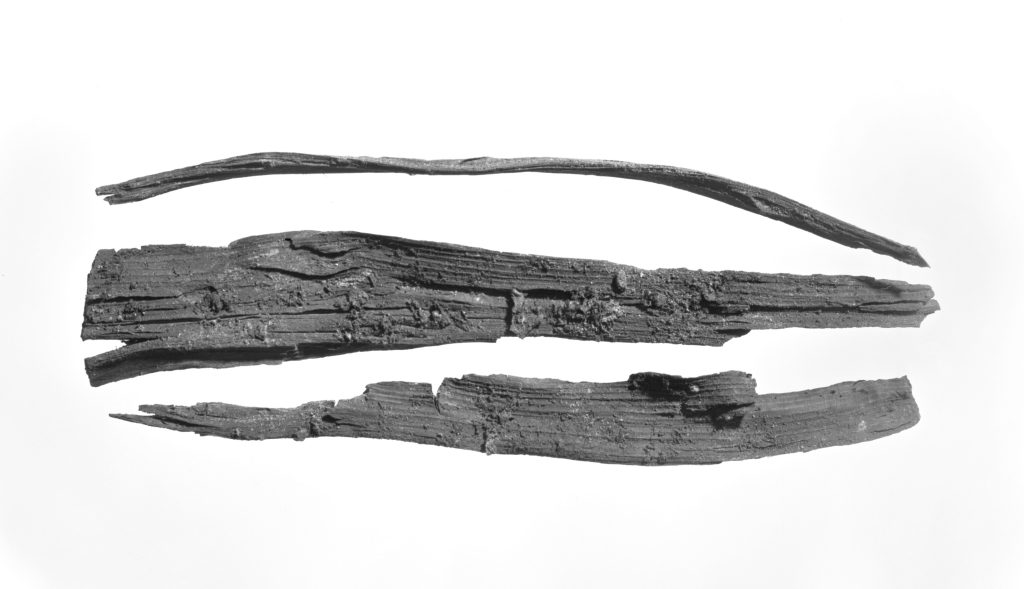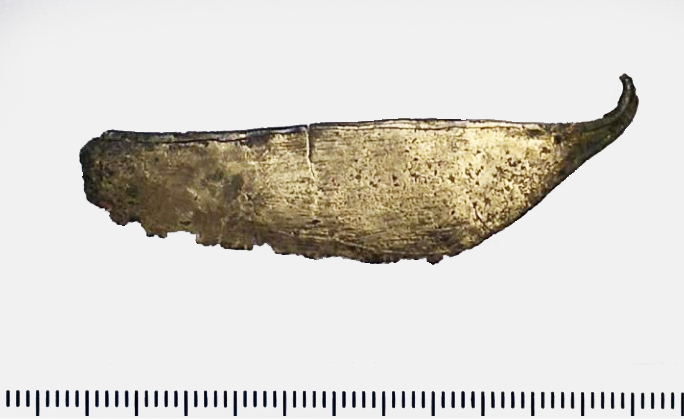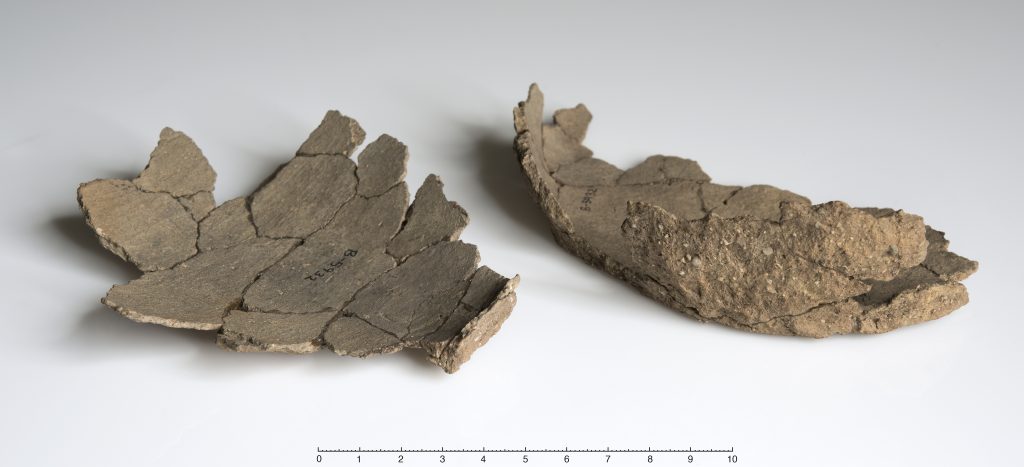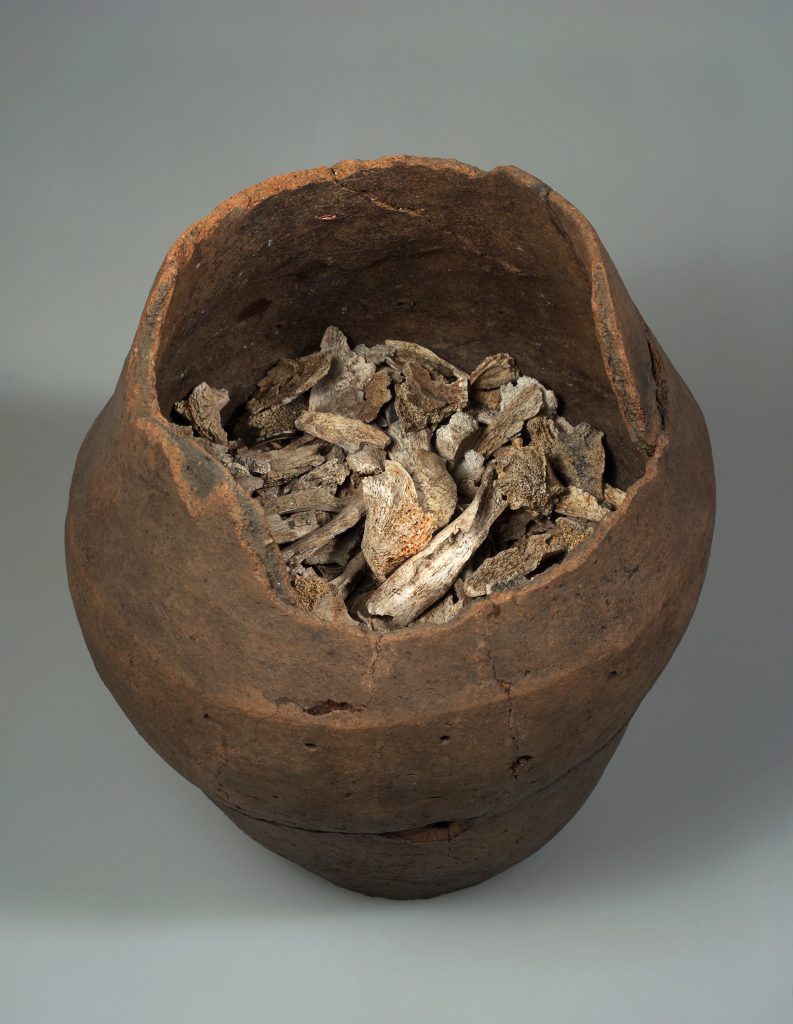

Razor knife with asymmetric wide blade, handle broken and missing. The end is straight and has been damaged. The blade is golden brown and there are marks along the back and edge that correspond to the bronze shroud found in the burial. Similar to Baudou’s type XI B 1a. Length: 6.4 cm. B5003/a.
Thin bronze plate, razor-shaped, the ends folded on three sides. The folds correspond to marks on the planer, which indicates that this is a sheath/case for the planer. Length: c.7.5 cm. B5003/b.
Incomplete clay flat urn. Brown ware, no decoration apart from two holes on one side (face). The urn has been reconstructed from ceramic shards found in the grave. Double conical body and flat bottom. Width: 14.5 cm (bottom), 20 cm (top) Height: c. 18 cm. B5003/c.
Incomplete clay urn. Brown goods, no decoration. The urn has been reconstructed from ceramic shards found in the grave. Double conical body and flat bottom. Width: 15.5 cm (bottom), 18 cm (top) Height: c. 11 cm. B5003/d.
There is also a lid. The lid is round and reconstructed from fragments in the grave. It is not clear which urn it originally belonged to. Width: c. 11 cm. B5003/e.
In addition, there is a box marked B5003, which contains sherds from at least two pots plus a piece of gray flint. Photo: Svein Skare © University Museum in Bergen, CC BY-SA 4.0
Location:
Bø, Hå, Rogaland
Context:
Found in a mound, «Dyrhaug», excavated by Gustafson in 1892-93. The mound was 22 m across and had a height of about 3.5 m. There was an inner cairn, 11-12 m x 2.5 m, covered with soil and a layer of stone. A large coffin was found in the center of the mound, containing some fragments of a skull and some teeth, probably an Early Bronze Age burial. The side of the ditch collapsed the following year, revealing a small coffin, 45 x 35 cm, 35 cm deep, built of boulders, about 3 m east of the central pit and higher up in the mound, about 1 m below the top. It contained B5003a-d and cremated bones. A stone coffin containing bones is said to have been found near the edge of the mound a few years earlier.
Date:
The razor is dated to the Younger Bronze Age period 4-5. The urns are dated to period 5.















